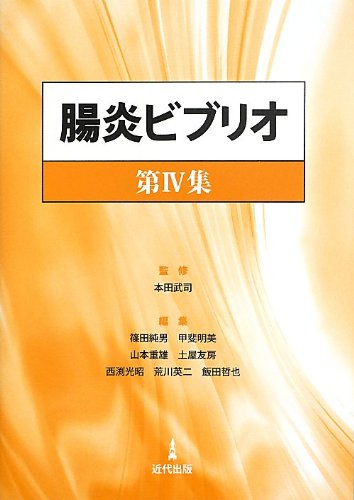1 0 0 0 OA 病原菌の鉄獲得機構
- 著者
- 山本 重雄 篠田 純男
- 出版者
- 日本細菌学会
- 雑誌
- 日本細菌学雑誌 (ISSN:00214930)
- 巻号頁・発行日
- vol.51, no.2, pp.523-547, 1996-04-25 (Released:2009-02-19)
- 参考文献数
- 210
- 被引用文献数
- 5
鉄 (イオン) はほとんどの生物の生存と増殖に不可欠な元素である。しかし, 宿主生体における鉄は大部分が結合型やヘム鉄として存在し, 細菌が自由に利用できる遊離鉄は極めて少ない。これは有害な活性酸素の生成防止と共に細菌感染症に対する非特異的生体防御機構の一つとなっている。それ故, 宿主生体中で増殖し得る病原菌は何らかの巧妙な鉄獲得系を保持している筈である。鉄欠乏下に発現する2つの鉄獲得系が明かにされている: 1) Fe3+に高親和性の輸送キレート剤, シデロフォア (siderophore, siderochrome とも呼ばれる) を産生し, トランスフェリンやラクトフェリンに結合している鉄を奪い取り, そのコンプレックスに特異的なレセプターを介して鉄を取り込む系; 2) トランスフェリン, ラクトフェリン, ヘムに結合している鉄をそれぞれに特異的なレセプターを介して直接利用する系。この能力は細菌の生体内増殖を可能にするので, 病原性 (強化) 因子の一つと考えられている。近年, 分子生物学的あるいは分子遺伝学的手法を用いて, これら鉄獲得系の発現調節機構や病原性強化における役割が個々の病原菌についてより詳細に解明されつつある。さらに, 鉄獲得に関与する遺伝子群と共に鉄獲得に直接関係のない病原因子遺伝子の発現も鉄欠乏に呼応して増加し, これに係わる統括的 (global) 調節因子の存在が明かにされた。病原菌の鉄獲得機構の解明は感染症防御のための新たな手段, 戦略を提供する可能性を秘めている。
1 0 0 0 1990年代のコレラ : 暴れ回る疾患
- 著者
- / 篠田 純男 篠田 純男
- 出版者
- 公益社団法人日本薬学会
- 雑誌
- 衛生化学 (ISSN:0013273X)
- 巻号頁・発行日
- vol.41, no.4, pp.239-249, 1995-08-31
The decade of the 1990s is witnessing a resurgence of cholera on a global scale. Cholera entered Latin America after almost 100 years and for the first time in the 20th century in an explosive fashion beginning with concurrent outbreaks in several coastal cities in Peru in late January 1991. The origin of the strains of Vibrio cholerae responsible for the initial outbreaks in Peru remains an enigma. Across the globe, in October 1992 a series of outbreaks of cholera-like illness in Southern India was found to be caused by a non-O1 serogroup which was subsequently classified as Vibrio cholerae O139 Bengal. As with the Latin American epidemic, the O139 serogroup spread with amazing speed and in the matter of a year affected all the cholera endemic areas in India and several neighbouring countries in south-east Asia. Imported cases of O139 V. cholerae has now been reported from several countries across the globe. These two events have dominated the global cholera scenario in the 1990s and both these events are reviewed.
1 0 0 0 1990年代のコレラ : 暴れ回る疾患
- 著者
- / 篠田 純男 篠田 純男
- 出版者
- 公益社団法人日本薬学会
- 雑誌
- 衛生化学 (ISSN:0013273X)
- 巻号頁・発行日
- vol.41, no.4, pp.239-249, 1995-08-31
- 参考文献数
- 78
The decade of the 1990s is witnessing a resurgence of cholera on a global scale. Cholera entered Latin America after almost 100 years and for the first time in the 20th century in an explosive fashion beginning with concurrent outbreaks in several coastal cities in Peru in late January 1991. The origin of the strains of Vibrio cholerae responsible for the initial outbreaks in Peru remains an enigma. Across the globe, in October 1992 a series of outbreaks of cholera-like illness in Southern India was found to be caused by a non-O1 serogroup which was subsequently classified as Vibrio cholerae O139 Bengal. As with the Latin American epidemic, the O139 serogroup spread with amazing speed and in the matter of a year affected all the cholera endemic areas in India and several neighbouring countries in south-east Asia. Imported cases of O139 V. cholerae has now been reported from several countries across the globe. These two events have dominated the global cholera scenario in the 1990s and both these events are reviewed.
1 0 0 0 腸炎ビブリオ
- 著者
- 篠田純男[ほか]編集
- 出版者
- 近代出版
- 巻号頁・発行日
- 2013
